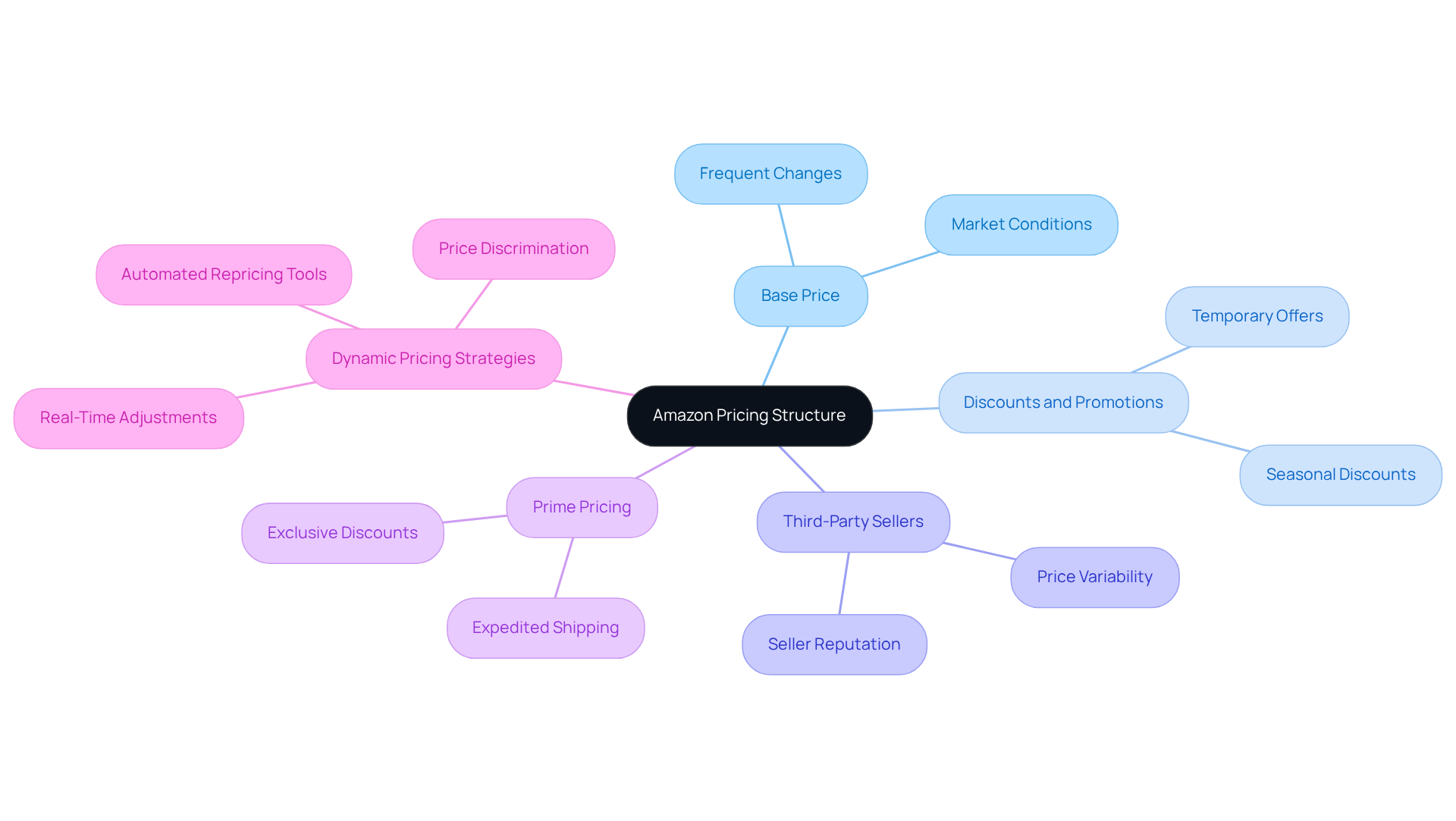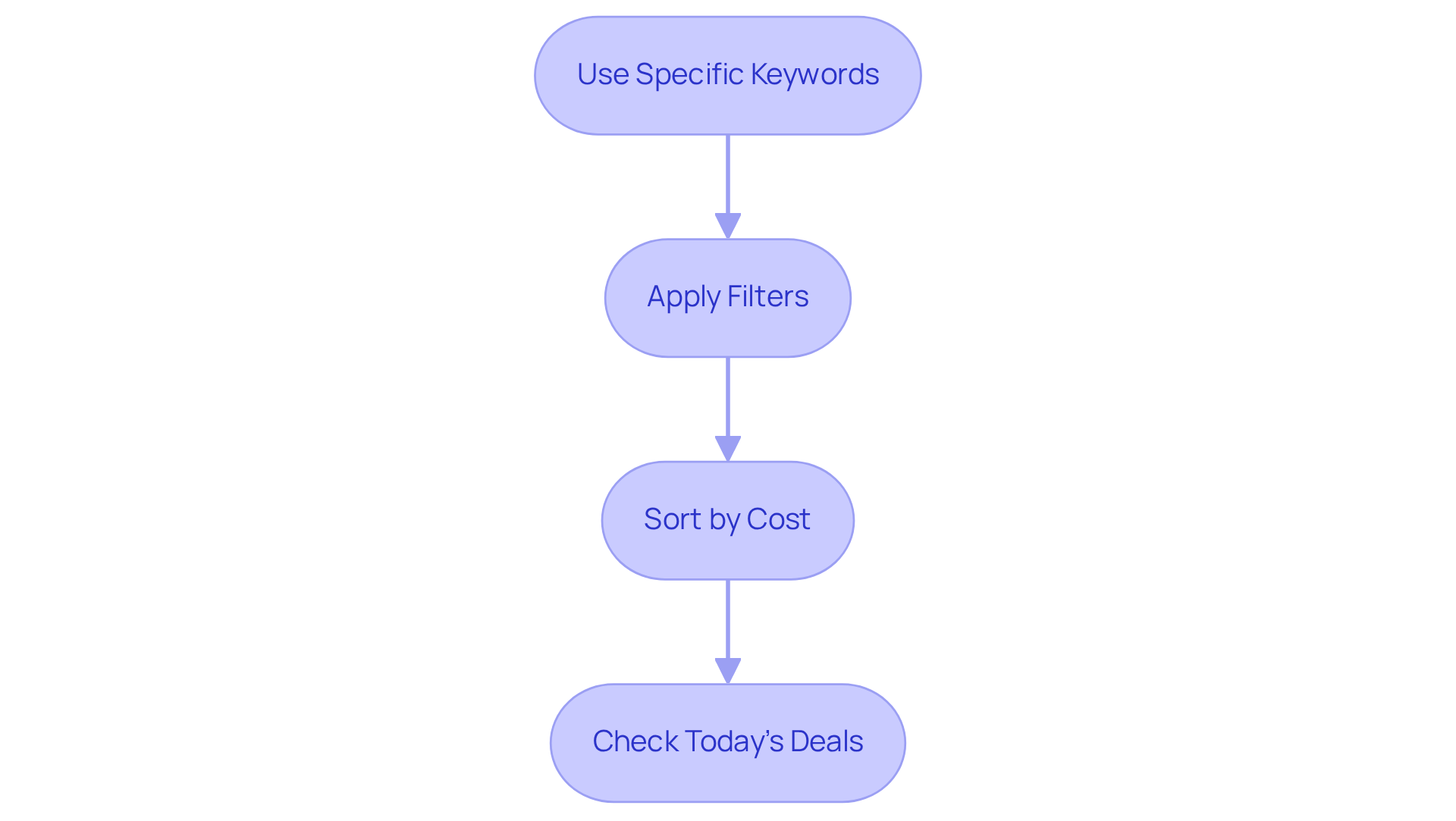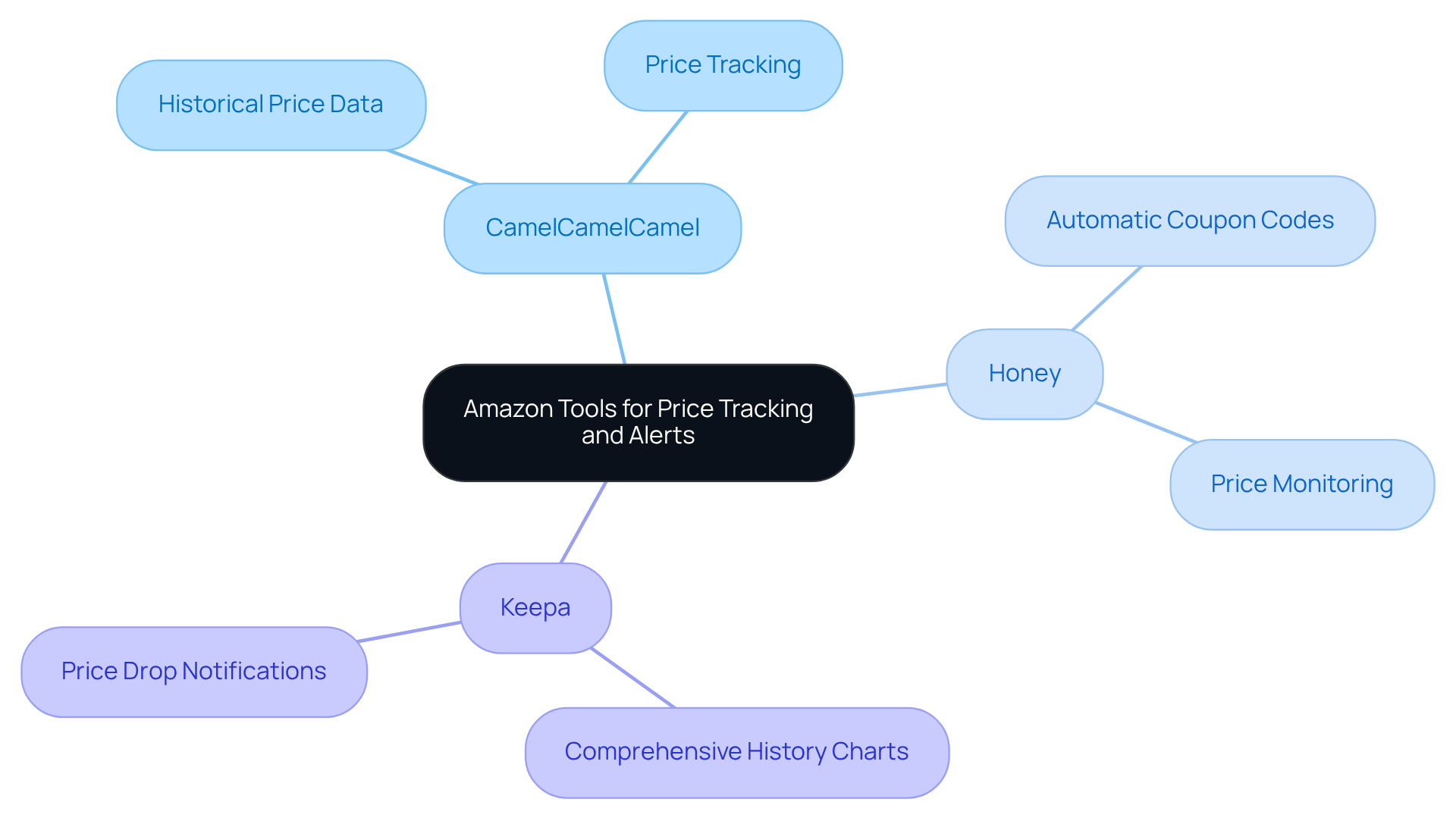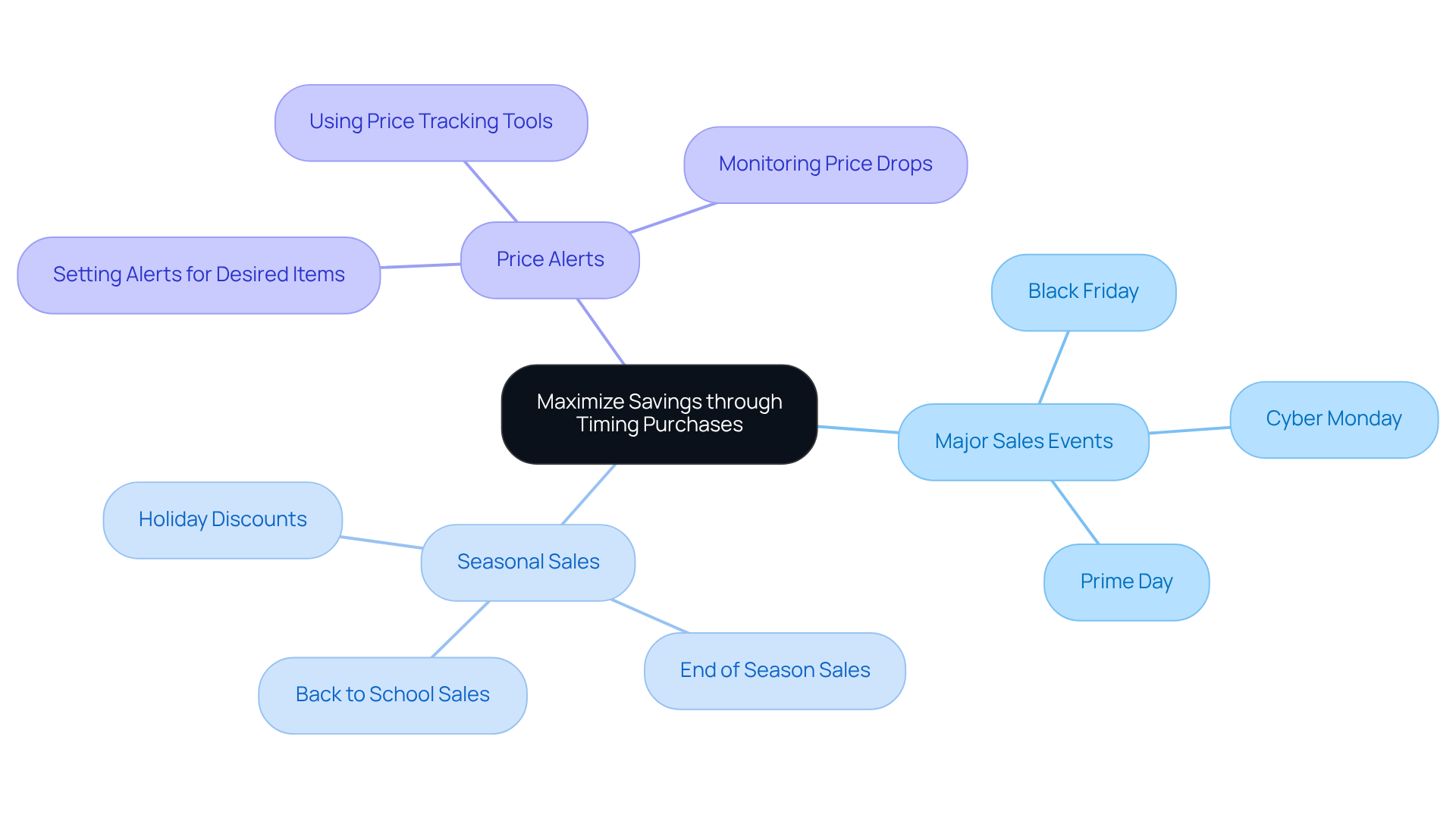
Overview
To achieve affordable pricing on Amazon deals, it is crucial to grasp the platform's dynamic pricing structure. Effective search techniques, coupled with the strategic use of price tracking tools, can greatly enhance your purchasing power. Understanding pricing fluctuations is essential; utilizing tools such as CamelCamelCamel and Honey, along with timing your purchases during major sales events, significantly increases your chances of identifying and securing the best deals. By mastering these strategies, you position yourself to capitalize on the most advantageous offers available.
Introduction
Navigating the vast marketplace of Amazon presents a formidable challenge, particularly when it comes to securing the best deals. With prices fluctuating millions of times daily due to demand and competition, a deep understanding of Amazon's pricing structure is essential for discerning shoppers. This guide unveils effective strategies that equip readers to uncover substantial savings, from mastering search techniques to leveraging advanced price tracking tools. However, the pressing question remains: how can one consistently outsmart the algorithm and secure the best prices amidst relentless competition?
Understand Amazon's Pricing Structure
To achieve cheap pricing on the platform, understanding its is essential, as prices fluctuate based on demand, competition, and inventory levels. Amazon adjusts its product costs approximately 2.5 million times daily, underscoring the agility and responsiveness of its pricing strategy. Consider the following key components:
- Base Price: This is the standard price established by the seller, subject to frequent changes based on market conditions.
- Discounts and Promotions: Be vigilant for temporary discounts or promotional offers that can lead to significant price reductions.
- Third-Party Sellers: Prices can vary considerably among different sellers for the same product, making it crucial to assess the seller's reputation and pricing history.
- Prime Pricing: Prime members often enjoy exclusive discounts and expedited shipping options, enhancing overall savings.
Moreover, the company employs discrimination strategies, offering varying prices based on location, browsing history, and purchasing habits. Grasping these elements enables you to anticipate price fluctuations and identify genuine bargains. As industry specialists emphasize, leveraging data-informed insights into market trends and competitor pricing strategies is vital for boosting sales and profitability on the platform. By implementing effective pricing strategies, such as dynamic rates and promotional tactics, sellers can strengthen their competitive edge while offering cheap pricing to foster customer engagement. Additionally, optimizing for Buy Box eligibility is critical for maximizing sales, as it significantly influences purchasing decisions.

Utilize Effective Search and Filter Techniques
To effectively navigate Amazon's pricing structure and secure the best deals, it is essential for DTC brand owners to employ strategic search and filter techniques.
- Use Specific Keywords: Opt for precise item names or features rather than broad terms. This significantly narrows search results, making it easier to find exactly what you need. As Neil Patel states, 'SEO, in a nutshell, is the art and science of pleasing search engines,' underscoring the importance of specific keywords in enhancing visibility.
- Apply Filters: Utilize the filtering options to arrange products by cost, customer ratings, and shipping methods. This practice allows for the quick identification of the most favorable deals available. Statistics indicate that using filters can lead to a more efficient shopping experience, enabling faster discovery of the best options.
- Sort by Cost: After applying filters, arrange the results from low to high cost. This straightforward step ensures that the cheapest options are displayed first, maximizing savings.
- Check 'Today's Deals': Regularly visiting the 'Today's Deals' section is advisable. This area features limited-time offers and discounts that can lead to significant savings. Industry insights suggest that consistently checking this section can result in discovering deals that may not be available elsewhere.
By mastering these techniques, DTC brand owners can effectively navigate the vast inventory of the platform and uncover the best offers available, ultimately enhancing profitability.

Leverage Amazon Tools for Price Tracking and Alerts
To optimize savings effectively, it is essential to leverage online resources for cost monitoring and notifications that provide cheap pricing. Consider the following powerful options:
- CamelCamelCamel: This website meticulously tracks Amazon prices and provides historical price data, enabling you to assess whether a current price represents a worthwhile deal.
- Honey: This browser extension automatically discovers and applies coupon codes at checkout, while also monitoring price reductions for items on your wishlist.
- Keepa: An additional tracking tool that offers comprehensive history charts and notifications for price drops on specific items.
By employing these tools, you can remain well-informed about cost fluctuations and make purchases at times with cheap pricing.

Time Your Purchases for Maximum Savings
Timing your purchases is essential for maximizing savings. To achieve this, consider the following strategies:
- Shop During Major Sales Events: Events such as Black Friday, Cyber Monday, and Prime Day are known for offering substantial discounts.
- Monitor Seasonal Sales: Many products are discounted during specific seasons or holidays; therefore, planning your purchases around these times can yield significant savings.
- Set Price Alerts: Utilize the tools available to set alerts for price drops on desired items, ensuring you make purchases when prices are at their lowest.
By implementing these timing strategies, you significantly enhance your potential to secure the best deals on Amazon, ensuring cheap pricing.

Conclusion
Achieving affordable pricing on Amazon demands a strategic grasp of its dynamic pricing structure and the implementation of effective techniques to navigate the platform. By comprehending the intricacies of Amazon's pricing algorithms and utilizing appropriate tools, shoppers can uncover substantial savings and enhance their purchasing decisions.
This article delineates critical steps to secure competitive pricing, including:
- Understanding Amazon's fluctuating prices
- Employing specific search and filter techniques
- Leveraging price tracking tools
- Timing purchases effectively
Each of these strategies is essential in identifying the best deals available, ensuring that consumers maximize their savings while shopping on the platform.
Ultimately, adopting these practices not only empowers consumers to make informed purchasing choices but also underscores the significance of being proactive in the pursuit of discounts. By remaining vigilant and applying the outlined strategies, shoppers can transform their Amazon experience into one characterized by exceptional savings and astute buying decisions.
Frequently Asked Questions
What is Amazon's pricing structure?
Amazon's pricing structure is dynamic, with prices fluctuating based on demand, competition, and inventory levels. The company adjusts product costs approximately 2.5 million times daily.
What is the base price on Amazon?
The base price is the standard price set by the seller, which is subject to frequent changes based on market conditions.
How can discounts and promotions affect pricing on Amazon?
Temporary discounts and promotional offers can lead to significant price reductions, making it important for buyers to be vigilant for these opportunities.
Why do prices vary among different sellers on Amazon?
Prices can vary considerably among different sellers for the same product, so it's crucial to assess the seller's reputation and pricing history when making a purchase.
What benefits do Prime members receive regarding pricing?
Prime members often enjoy exclusive discounts and expedited shipping options, enhancing their overall savings on purchases.
How does Amazon use price discrimination?
Amazon employs price discrimination strategies by offering varying prices based on factors such as location, browsing history, and purchasing habits.
What strategies can sellers implement to enhance their pricing on Amazon?
Sellers can implement effective pricing strategies, such as dynamic rates and promotional tactics, to strengthen their competitive edge and offer lower prices to engage customers.
Why is Buy Box eligibility important for sellers?
Optimizing for Buy Box eligibility is critical for maximizing sales, as it significantly influences purchasing decisions by customers on the platform.
FAQs











